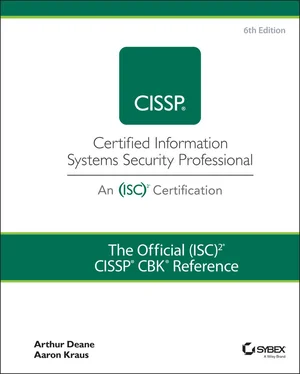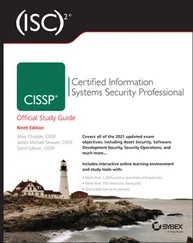In discussing legal matters, it is important to stress that laws and courts vary significantly across the globe; there are a great many particular distinctions between how law enforcement, courts, lawyers, and judges behave and perform, depending on where you live, where the events leading to the investigation occurred, and other variables. The information presented in this book is largely based on traditions of English common law, strictly as an example; however, it is absolutely essential that you, as a security professional, familiarize yourself with the laws and regulations relevant to your locale and customers so you can provide adequate, informed service.
Burden of proof is the requirement that the criminal prosecutor or civil plaintiff/claimant prove the claims they are making against the accused, or defendant. The party making a claim must demonstrate the truth of that claim, with compelling evidence; the entity defending against the claim, in most modern societies, is presumed innocent or without fault — that is, the court will not recognize the validity of a claim against anyone until that claim is substantiated and the defendant is proven guilty. The amount and strength of proof required to sway the judgment away from this presumption of innocence differs depending on which kind of claim is being made; for instance, whether the claim is being made by one private party against another or whether the claim is being made by the government against a person or organization (more on this distinction in just a moment). In the U.S. legal system, the two predominant standards of proof that must be met are called preponderance of the evidence and beyond a reasonable doubt.
Preponderance of the evidence is the lower standard of the two and is used primarily in civil actions. It essentially means that the evidence shows that the defendant is more likely to have caused the damage than not. In other words, the evidence convinced the judge, jury, or ruling body that there was at least a 51 percent chance that the defendant caused the damage.
The second standard, beyond a reasonable doubt , is much harder to prove and is used primarily in criminal actions. It is insufficient for the evidence to merely make the judge or jury lean more toward guilt than not. In this case, the evidence has to be so clear and compelling that a “reasonable” person has no doubt or reservation about the defendant's guilt after seeing it.
When discussing investigations, for (ISC) 2purposes, the term administrative will refer to actions constrained to those conducted within a single organization — that is, the organization performs an administrative investigation of itself. Internal investigations are typically performed when the matter involves some violation of organizational policy and does not involve any external entities such as law enforcement, investors, third-party suppliers, or attackers.
NOTETo avoid confusion, it is important to distinguish how the term administrative is used in a variety of ways to avoid confusion. For (ISC) 2, it means an internal investigation. In the United States, administrative law refers to a set of laws made by regulatory bodies (such as the Drug Enforcement Agency, the Food and Drug Administration, and the like). For the purposes of the CISSP Body of Knowledge, an administrative investigation will only refer to an internal investigation.
The organization itself can task anyone to perform activities for administrative investigations. This can include staff and employees within the organization (physical and IT security personnel, auditors, management, etc.) or might involve specialized contractors hired by the organization to perform investigative tasks.
The burden of proof for administrative investigations is the lowest of all investigation types. Management can use whatever criteria they choose to believe evidence.
Punitive measures that may result from administrative investigations include employee termination, loss of privilege, reassignment, and so forth. Management might also choose to change the type of investigation as a result of findings made during the administrative investigation; if the administrative investigation reveals that the parties involved engaged in intentional/malicious or criminal activity, management may escalate to civil actions (lawsuits) or filing criminal charges, both of which would require investigatory actions relevant to those situations.
Despite the low burden of proof required for management to act in an administrative investigation, care should still be taken during the process. Occasionally, evidence gathered during an administrative investigation may lead to or be used in a civil or criminal investigation, as stated earlier. If evidence is mishandled during an administrative investigation, it may compromise the ability to use that evidence in later proceedings. If there is any uncertainty about whether an administrative investigation may ultimately escalate, a discussion of this concern with management or in-house or outside counsel is prudent.
Consider this example of an investigation: The IT department contacts the security office to make a report of an employee misusing the organization's internet connection to engage in unauthorized file sharing, in direct violation of the organization's policy. The security office makes the situation known to management; management instructs the IT and security departments to gather information about the user's online activity. Personnel in the IT and security departments work together to gather log data about the user's account and machine, and they present this information to management. Management consults with the legal and human resources departments to evaluate courses of action. Management decides to terminate the employee.
This is strictly an administrative investigation.
Criminal investigations involve prosecution under criminal laws. The government, at the federal, state, or local level, prosecutes violations of its laws by imposing fines, imprisonment, or, in some extreme cases, even death for offenders. Criminal investigations are conducted by law enforcement organizations, which can include local, state, federal, or even international agencies. While some CISSPs are in law enforcement positions and conduct criminal investigations themselves, most of us will likely be reporting criminal incidents to law enforcement and helping to collect/provide evidence.
For a law enforcement agency to take part in prosecuting a criminal matter, jurisdiction must first be established. Jurisdiction, as we discussed in the section, “Determine Compliance and Other Requirements,” is the legal authority of a governmental body (such as a court or enforcement agency) over a specific matter, often based on geography. With crimes that involve information assets, determining jurisdiction can be complicated and frequently may involve several different government bodies, locales, and laws.
Once jurisdiction has been established, the law enforcement investigator first tries to understand what happened, what damage was done, and what possible range of crimes apply for possible prosecution. In some cases, because of the global nature of IT, a case may be dropped or referred to another law enforcement agency due to a combination of jurisdictional issues, the cost of the investigation versus the scale and impact of the crime, and the likelihood of successful prosecution.
As the investigation progresses, law enforcement begins to understand who the potential suspects might be and what evidence is available, and the investigator must begin to narrow the focus to specific laws and statutes. Many countries, provinces, cities, and other jurisdictions have a variety of laws relating to the misuse and abuse of technology.
Читать дальше












